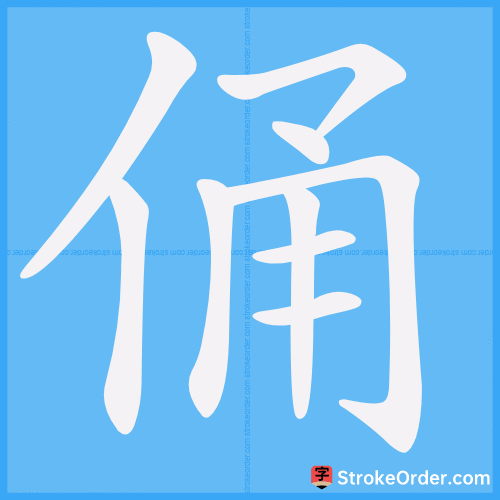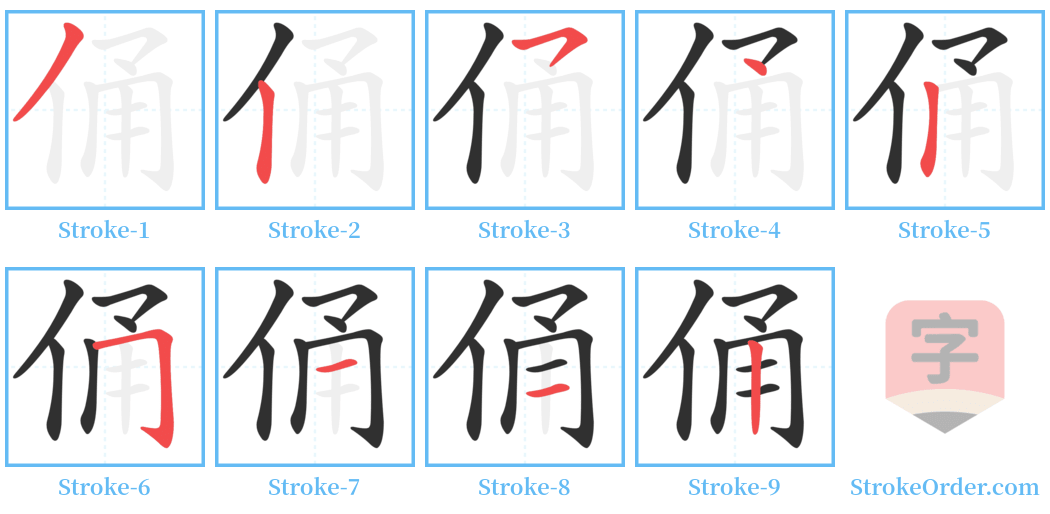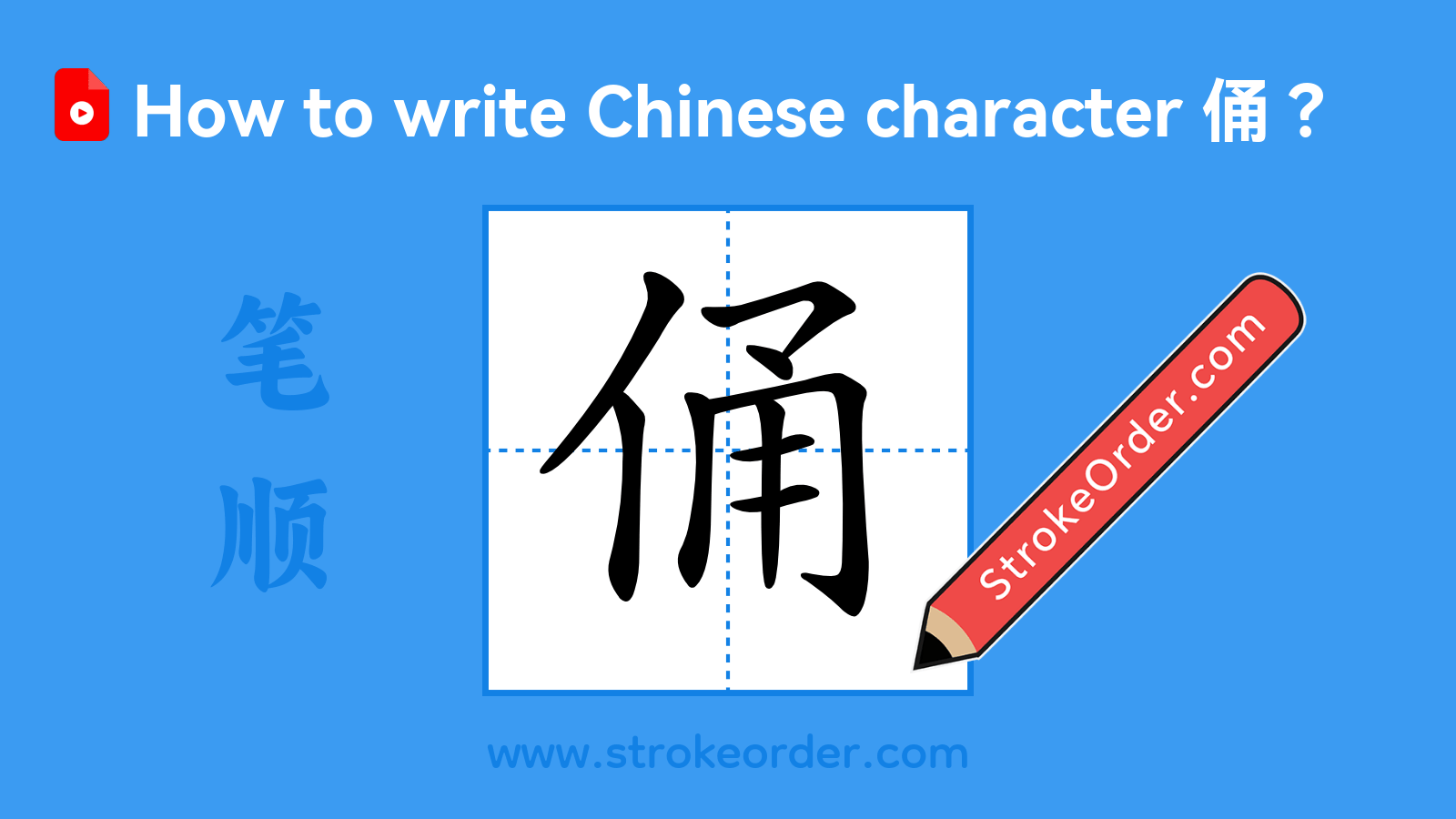俑 Stroke Order
Animated Stroke Order of 俑

Stroke Order Diagrams for 俑

Step-by-Step Handwriting Guide for 俑

Learn to Write Chinese Characters with Video Tutorials
Watch the video of writing the Chinese character "俑", learn the correct stroke order (笔顺) of the character "俑", and master the standard way of writing the character "俑".

Free Printable Handwriting Practice with Stroke Order: 俑
Printable Writing Practice Worksheet of "俑" in Portrait Orientation (Tian Zi Ge)

Printable Writing Practice Worksheet of "俑" in Landscape Orientation (Tian Zi Ge)

Information of 俑
Pinyinyǒng
Radical
亻
Strokes
9 strokes
Usage
★★★★
Definition
wooden figures buried with the dead
俑 [yǒng] 〈名〉 1. **Definition**: In ancient times, a wooden or ceramic figure used in funerary practices. 古代殡葬用的木制或陶制的偶人。 2. **Examples**: - Wooden figurine (木~) - Ceramic figurine (陶~) - Female figurine (女~) - Soldier figurine (兵马~) 3. **Etymology**: - **Original Meaning**: A figurine used as a companion in burial, generally made of wood or pottery, resembling a person, hence the character includes '人' (person). - **Character Formation**: Phonetic-ideographic combination. Contains '人' (person) and indicates the sound '甬' (yǒng). 4. **References**: - From the book "Pí Cāng": "俑, wooden figure. Set up in burial receptions and capable of dancing, hence named." - From "Tōng Diǎn" citing "Lǐ Jì": "俑 has facial features and hair, resembling living persons." - From "Lǐ Jì·Tán Gōng": Confucius said that providing grass for spirits is virtuous, but using figurines is inhumane; this raises concerns about using people. 5. **Example Usage**: - Examples include: ceramic figurines (陶俑), warrior figurines (武士俑).
lit. the first person to bury funerary dolls (idiom) / fig. the originator of an evil practice
Stone figurines
figurines of warriors and horses buried with the dead / Terracotta Army (historic site)
Input Method for 俑
Pinyinyong3
Wubi
wceh
Cangjie
onib
Zhengma
nxld
Four Corner
27227
Unicode
U+4fd1
Same Pronunciation Characters
佣勇咏庸拥永泳涌用踊俑喁墉壅恿慵甬痈臃蛹邕镛雍饔鳙傭勈埇擁湧癰詠踴雝鱅傛嗈鄘滽嫞槦銿牅噰郺澭癕鏞廱灉鷛颙鰫怺栐柡悀硧惥愑塎嵱愹彮慂鲬
Same Radical Characters
亿什仁仅仆仇仍仔他仗付仙代仪们仰仲件价任份仿伊伍伏伐休优伙伟传伤伦伪伯估伴伶伸伺似佃但位低住佐佑体何佛作你佣佩佳使侄侈例侍供依侠侣侥
本文来自潇潇雨歇投稿,不代表汉字笔顺中文网英文版立场,如若转载,请注明出处:https://www.strokeorder.cn/strokeorder/11108.html

 微信扫一扫
微信扫一扫 